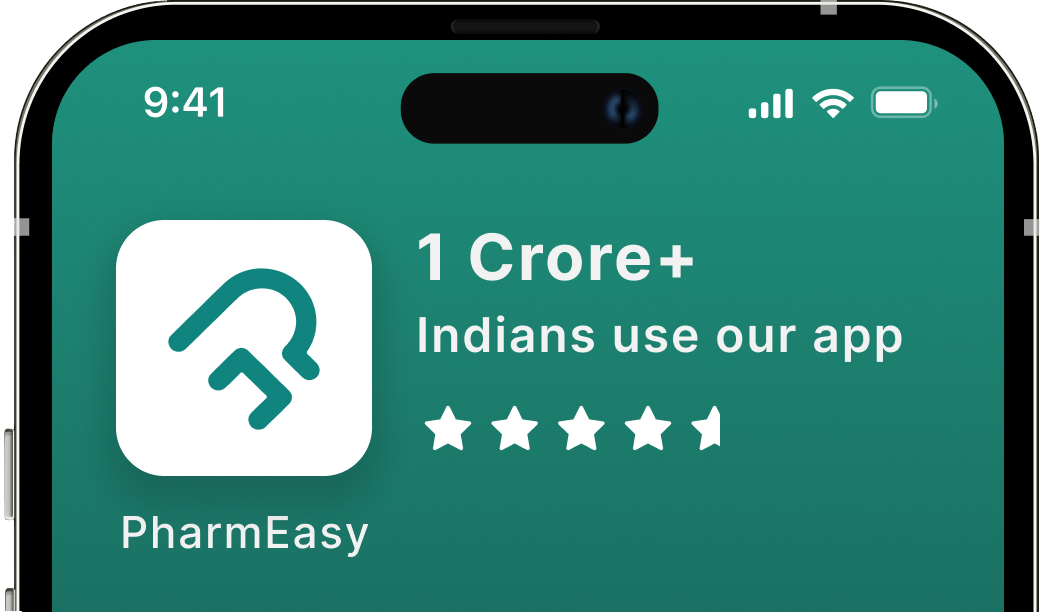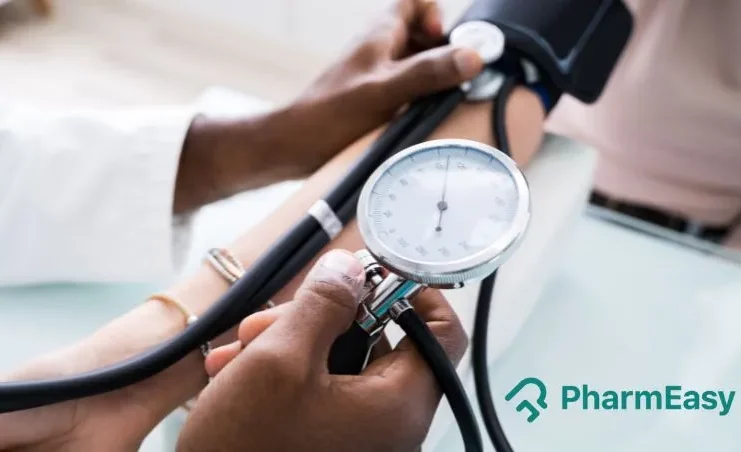Introduction
Commonly, high blood pressure is the medical condition that gets a lot of focus when it comes to health issues as it may lead to several complications. But what about low blood pressure, which is otherwise called hypotension? This condition is usually considered as harmless, however that’s not always true. If blood pressure drops suddenly or stays too low due to a health problem, it can be dangerous. This means the brain, heart, and other organs might not get enough blood, which could lead to a heart attack or stroke. But the tricky part is that many people don’t even know they have hypotension because there may be no symptoms1,2. So, is low blood pressure really something to ignore? Let’s find out with this blog. Here, we will discuss in detail about its types, causes and symptoms, and also shed some light on hypotension treatment.
What is Hypotension
Hypotension occurs when blood pressure falls below normal levels, reducing the force that moves blood through the vessels. This pressure is essential for delivering oxygen to the brain and other organs. Without adequate blood pressure, the body may struggle to function properly. When blood pressure drops, the heart compensates by beating faster, and the blood vessels constrict to maintain normal pressure. However, if the heart doesn’t pump fast enough or the blood vessels don’t tighten properly, blood pressure remains low. This can cause dizziness, weakness, or fainting1,3.
How is Blood Pressure Measured
Blood pressure is measured using a cuff around the upper arm, which is connected to a machine that records two numbers in millimeters of mercury (mmHg). The first number, systolic pressure, measures the force when the heart pumps. The second number, diastolic pressure, measures the force when the heart rests.
A normal blood pressure range is between 90/60 mmHg to 120/80 mmHg. When blood pressure falls below 89/59 mmHg, it is referred to as hypotension. Some individuals with low blood pressure experience no symptoms, while others may feel dizzy or faint. In severe cases, low blood pressure can limit oxygen flow to vital organs. Regular checks help manage hypotension effectively2,3.
Types of Hypotension
Low blood pressure can be caused by several factors, leading to different types such as:
- Primary Hypotension: Some people naturally have low blood pressure, and it’s not linked to any illness. It is usually related to their body’s natural condition4.
- Secondary Hypotension: This happens when health problems or medicines lower blood pressure. Heart problems like failure, irregular beats, or valve issues reduce circulation, causing low blood pressure. Heart medicines like beta-blockers or diuretics slow the heart or remove too much fluid. Hormone issues, like weak adrenal glands or low thyroid, also affect how the body controls blood flow, reducing blood pressure4,5.
- Orthostatic Hypotension: Normally, when you suddenly stand up from a lying/sitting position, the blood pressure drops briefly, but in this case, it stays low for more than three minutes after standing up, causing dizziness1,4.
- Postprandial Hypotension: Some older people experience hypotension after eating as digestion directs blood towards the stomach. Normally, the body adjusts by tightening blood vessels and increasing heart rate. If this response is weak, blood vessels stay too wide, or the heart may not pump enough, causing a drop in blood pressure4,6.
- Neurogenic Hypotension: When the body’s nervous system doesn’t work properly, blood vessels don’t tighten enough, causing low blood pressure.
- Micturition Syncope: Some older adults may feel dizzy or faint after urinating because of a sudden drop in blood pressure4.
Understanding what is hypotension and its different types, helps in identifying the causes and choosing the right treatment.
Signs & Symptoms of Hypotension
The signs and symptoms of hypotension are as follows:
- Feeling very tired or low on energy.
- Feeling dizzy or lightheaded.
- Vision becoming blurry or unclear.
- Feeling nauseous or vomiting.
- Fast, strong or irregular heartbeat.
- Finding it hard to focus or feeling confused.
- Pain in the neck or back.
- Fainting or briefly passing out.
Sometimes, hypotension symptoms may not appear, you can find it only when your blood pressure is checked. A healthcare provider can identify signs of hypotension like a fast or slow heartbeat, cold knees, pale skin, and reduced urine output2,3 .Understanding these symptoms and signs helps in recognizing low blood pressure early and managing it effectively.
What Causes Hypotension
Low blood pressure can occur due to various causes, including:
- Dehydration: Losing too much water from sweating, vomiting, or diarrhoea can lower blood pressure.
- Blood Loss: Heavy bleeding from an injury or illness reduces blood volume, causing low blood pressure.
- Heart Problems: If the heart beats too fast, too slow, or is too weak, it can’t pump enough blood.
- Nerve Issues: An abnormal response of the autonomic nervous system (the part of the nervous system that controls automatic functions like heart rate and blood pressure), leading to a sudden drop in blood pressure. Common triggers include pain, prolonged standing, or emotional stress.
- Severe Infections (Sepsis): A serious infection can cause a sudden drop in blood pressure.
- Allergic Reactions: A strong allergic reaction (anaphylaxis) can make blood pressure drop quickly.
- Medications: Some medicines for heart disease, depression, or high blood pressure can lower blood pressure.
- Hormonal Disorders: Conditions like adrenal gland problems, underactive thyroid, and diabetes can affect hormone balance. This may disrupt blood pressure control, leading to low blood pressure2,4.
- Pregnancy: Low blood pressure can happen in early and mid-pregnancy as hormonal changes cause blood vessels to relax and widen. This reduces resistance in the blood flow, leading to a natural drop in blood pressure2,7.
Who is at Risk of Developing Hypotension
Some people are more likely to have low blood pressure. These include:
- Older adults: This happens because their body’s ability to control blood pressure weakens with age. Their nerves respond slower, and they often have other health conditions that increase the risk8.
- People with chronic conditions: Diseases like diabetes, Parkinson’s, and heart disorders can affect how the body controls blood pressure.
- Individuals taking certain medications: Those who are taking medicines for heart disease, depression, or high blood pressure4.
- People with neurological and autoimmune conditions: Some nerve problems, like pure autonomic failure and multiple system atrophy, make it harder to control blood pressure, causing a sudden drop when standing. Some immune diseases also cause hypotension9.
- Pregnant women: Blood pressure may drop in early pregnancy7.
- People prone to dehydration: Not drinking enough fluids or losing too much water through sweating can lower blood volume and blood pressure4.
These factors can make you more prone towards having a low blood pressure. If you’re looking out for ways on how to treat hypotension or prevent it, being aware of these risk factors can help you manage the condition more effectively.
Complications of Hypotension
Low blood pressure can cause serious health issues if not managed properly. These include:
- Falls and Injuries: Dizziness or fainting from low blood pressure can lead to falls, which may result in hip or spine fractures, especially in older adults.
- Reduced Mobility: Injuries from falls can make movement difficult, affecting daily activities and independence.
- Organ Damage: Low blood pressure can reduce oxygen supply to vital organs like the heart, brain, and kidneys, leading to long-term damage.
- Shock: A severe drop in blood pressure can cause the body to go into shock, which can be life-threatening if not treated immediately5,10.
Diagnosis and Tests for Hypotension
Identifying the cause when the blood pressure is in the hypotension range, requires several tests to determine underlying health issues, such as:
- Medical History and Physical Examination: The doctor reviews your health, medications, and lifestyle to find possible causes of hypotension.
- Blood Pressure Monitoring: Blood pressure is regularly measured, especially when changing positions.
- Laboratory Tests: Blood tests help find the cause of low blood pressure. A complete blood count (CBC) checks for anaemia, while thyroid (TSH, T4) and cortisol tests detect hormone problems that can affect blood pressure4,8.
- Electrocardiogram (ECG): This test can be done to check for irregular heartbeats that might be linked to low blood pressure4,10.
- Echocardiogram: A heart scan using sound waves to detect structural problems. It helps find fluid around the heart, measure heart function, and guide fluid treatment in cases of low blood pressure4,8.
- Tilt Table Test: Measures blood pressure changes when moving from lying to standing, diagnosing orthostatic hypotension.
- Ambulatory Blood Pressure Monitoring: Records blood pressure for 24 hours to detect fluctuations during daily activities4.
- Imaging Tests: X-ray and CT scan of the chest can check for a blood clot in the lungs, which can cause severe low blood pressure8,10.
These tests help find the reasons for hypotension so the right treatment can be given.
Management and Treatment
Management of low blood pressure depends on the underlying cause. In many cases, lifestyle adjustments and medications can effectively manage symptoms and prevent complications. Here are some common hypotension treatment approaches:
- Salt/Electrolyte Intake: Consuming more salt can support fluid balance and help raise blood pressure, especially in individuals with orthostatic hypotension (described earlier). But these should be taken as advised by your doctor to avoid excess intake11.
- Compression Stockings: They improve circulation and help avoid blood pooling in the legs, potentially contributing to managing blood pressure. Your doctor can guide you best if these are suitable for you or not based on your condition.
- Intravenous (IV) Fluids: In severe cases of dehydration or shock, IV fluids can be used to quickly restore blood volume and stabilise blood pressure.
- Medication Adjustments: If medications are contributing to low blood pressure, doctors may adjust the dosage or switch to alternatives.
- Vasopressor Medications: In extreme cases, medications that constrict blood vessels and raise blood pressure may be required. Examples include5:
- Hormone Therapy: If low blood pressure is due to hormonal imbalances (such as adrenal insufficiency), hormone replacement therapy may help regulate blood pressure2,4.
How to Prevent Hypotension
Here are a few tips for the prevention of hypotension:
- Stay Hydrated: Drinking enough fluids helps prevent dehydration. Although in some cardiac conditions, fluid intake may need to be restricted, so your doctor can guide you best on this.
- Rise Slowly: When getting up from sitting or lying down, move gradually to prevent dizziness.
- Limit Standing Time: If you experience sudden drops in blood pressure when standing, try not to stay in one position for too long.
- Eat smaller meals: Eating smaller meals with less carbohydrates can help prevent a drop in blood pressure after eating.
- Avoid Alcohol: Alcohol can lower blood pressure further, so limit or avoid it.
- Avoid triggers: Stay away from drugs or supplements that may lower your blood pressure2,7.
When to See a Doctor
If you have signs of hypotension, it’s important to seek medical advice:
- Chest pain
- Shortness of breath
- Fainting or dizziness
- Black or maroon stools
- Fever above 101°F (38.3°C)
- Irregular heartbeat
Get immediate medical help:
- Loss of consciousness due to low blood pressure.
- Signs of shock: cold, sweaty skin, fast breathing, blue skin, or a weak, rapid pulse2,10.
Seeing a healthcare provider quickly is essential to ensure how to treat hypotension properly and prevent further complications.
Living With Hypotension
If you suffer from low blood pressure, being mindful of certain things and incorporating some others in your routine can help avoid symptoms and major consequences. For instance, standing up slowly and elevating the head while sleeping can help in preventing dizziness due to hypotension. Moving around regularly, drinking enough water and eating smaller meals may also be beneficial in regulating blood pressure falls. Sometimes your doctor may suggest adding more salt to the diet or prescribe electrolyte supplements. It is important to follow your doctor’s instructions for any taking any medications prescribed for hypotension and visit them for regular checkups to track the condition. Finally, learn about the symptoms that may warrant immediate medical attention, monitor them closely and seek help if they become severe or worsen2,3.
Conclusion
Hypotension occurs when blood pressure drops too low, often due to dehydration, heart issues, or medications. Managing it involves staying hydrated, eating well, and avoiding sudden position changes. Regular blood pressure checks and medical visits are essential for controlling hypotension and preventing complications.
Frequently Asked Questions (FAQs)
What can I do if I feel faint or like I might faint? If you feel like you’re going to faint, try standing on your heels, squeezing a rubber ball, or sitting down in a cool place. These things help your blood flow and stop fainting9.
What should I avoid if I have low blood pressure? To manage low blood pressure, avoid sitting or standing for long periods, don’t change your posture suddenly, and limit alcohol intake12.
Does drinking cold water help with fainting? Drinking cold water before bed may help improve blood flow to the heart, supporting better circulation and reducing the risk of fainting9.
Can medications cause low blood pressure? Yes, anti-anxiety medications, some antidepressants, diuretics, heart medicines (for high blood pressure or heart disease), surgery medications, and painkillers may lower blood pressure. If you’re experiencing symptoms, inform your doctor. Always consult your provider before stopping any prescribed medication10.
Who can have low blood pressure? Low blood pressure can affect anyone, but it’s more common in people over 50. It can also happen to younger, active people without causing symptoms1.
References
- Looking for Trouble: Identifying and Treating Hypotension. Pharmacy and Therapeutics [Internet]. 2019 Sep;44(9):563. Available from: https://pmc.ncbi.nlm.nih.gov/articles/PMC6705478/
- National Heart, Lung, and Blood Institute. Low Blood Pressure – Low Blood Pressure | NHLBI, NIH [Internet]. www.nhlbi.nih.gov. 2022. Available from: https://www.nhlbi.nih.gov/health/low-blood-pressure
- British Heart Foundation. What causes low blood pressure and what are the symptoms? [Internet]. www.bhf.org.uk. 2024. Available from: https://www.bhf.org.uk/informationsupport/heart-matters-magazine/medical/low-blood-pressure
- Kaur R, Kumari R. International Journal of Cardiovascular Nursing Comprehensive Review on Hypotension: Causes, Management, and Implications. Available from: https://journalspub.com/wp-content/uploads/2024/04/20-24-Comprehensive-Review-on-Hypotension-Causes-Management-and-Implications-2.pdf
- Sharma S, Hashmi MF, Bhattacharya PT. Hypotension [Internet]. Nih.gov. StatPearls Publishing; 2023. Available from: https://www.ncbi.nlm.nih.gov/books/NBK499961/
- Jansen RWMM. Postprandial Hypotension: Epidemiology, Pathophysiology, and Clinical Management. Annals of Internal Medicine. 1995 Feb 15;122(4):286. Available from: Postprandial hypotension: epidemiology, pathophysiology, and clinical management – PubMed
- Sanghavi M, Rutherford JD. Cardiovascular Physiology of Pregnancy. Circulation [Internet]. 2014;130(12):1003–8. Available from: https://www.ahajournals.org/doi/full/10.1161/CIRCULATIONAHA.114.009029
- Bader, Hatim Abdullah Albaqami, Alharbi FA, Turki Abdulbari Altherwi, Badar K, Alqahtani SM, et al. Hypotension: An Overview of Updated Data for Healthcare Providers. Journal of Ecohumanism [Internet]. 2024 Dec 31 [cited 2025 Mar 25];3(8). Available from: https://www.researchgate.net/publication/388590274_Hypotension_An_Overview_of_Updated_Data_for_Healthcare_Providers
- Clement’ D. Low blood pressure [Internet]. www.escardio.org. 2019. Available from: https://www.escardio.org/Journals/E-Journal-of-Cardiology-Practice/Volume-17/low-blood-pressure
- Low blood pressure: MedlinePlus Medical Encyclopedia [Internet]. Medlineplus.gov. 2019. Available from: https://medlineplus.gov/ency/article/007278.htm
- Snapper H, Cheshire WP. Oral and intravenous hydration in the treatment of orthostatic hypotension and postural tachycardia syndrome. Autonomic Neuroscience [Internet]. 2022 Mar 1;238:102951. Available from: https://www.sciencedirect.com/science/article/pii/S1566070222000108
- NHS. Low blood pressure (hypotension) [Internet]. NHS. 2023. Available from: https://www.nhs.uk/conditions/low-blood-pressure-hypotension/
Disclaimer: The information provided here is for educational/awareness purposes only and is not intended to be a substitute for medical treatment by a healthcare professional and should not be relied upon to diagnose or treat any medical condition. The reader should consult a registered medical practitioner to determine the appropriateness of the information and before consuming any medication. PharmEasy does not provide any guarantee or warranty (express or implied) regarding the accuracy, adequacy, completeness, legality, reliability or usefulness of the information; and disclaims any liability arising thereof.
 0
0
 -1
-1 
























Comments